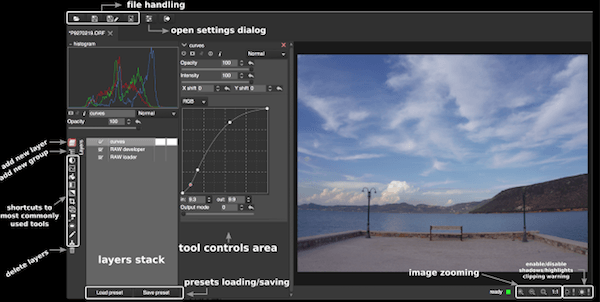

Photoshop can edit and compose raster images in multiple layers and supports masks, alpha compositing and several color models. "to photoshop an image", " photoshopping", and " photoshop contest") although Adobe discourages such use. The software's name is often colloquially used as a verb (e.g.
#Adding tools to photoflow software#
Since then, the software has become the most used tool for professional digital art, especially in raster graphics editing. It was originally created in 1987 by Thomas and John Knoll. Window = 'AOuZoY4qgeOVh10Fxe2Hmbi3O0oyvb1STA:1679903837198' _WidgetManager._Init('//_WidgetManager.American English, British English, Arabic, Mandarin Chinese, Chinese Traditional, Czech, Danish, Dutch, Finnish, French, German, Hebrew, Hungarian, Italian, Japanese, Korean, Norwegian, Polish, Portuguese, Russian, Spanish, Swedish, Romanian, Turkish and UkrainianĪdobe Photoshop is a raster graphics editor developed and published by Adobe Inc. For example, the RAW processing part is largely derived from Darktable (RAW decoding and color matrices) and RawTherapee (Amaze, LMMSE and IGV demosaicing algorithms).
#Adding tools to photoflow code#
After few email exchanges, it was clear to me that PhotoFlow was going to be built on top of VIPS.įrom there on, PhotoFlow has been entirely built on top of VIPS, re-using existing code whenever possible. Last but not least, the library is still in active development, and the authors are very responsive to user requests. No surprise that Wikipedia uses VIPS to scale-down large images ( ). VIPS is designed to process large images in a memory-efficient way, is intrinsically multi-threaded, and provides one of the fastest and better optimized processing frameworks on the Open Source market. Luckily, I came across a little software gem called VIPS, an image processing library originally written for processing multi-spectral images of ancient paintings. I'm not a professional programmer, and PhotoFlow is developed entirely in my limited spare time, therefore I could not afford one or more years for writing a decently optimized and fast processing engine.


This is simply because none of the Open Source photo editors provides at the same time high-quality RAW development, adjustment layers and non-destructive local editing.
:max_bytes(150000):strip_icc()/005-new-artboards-feature-of-adobe-photoshop-1701379-0f830f6a5cef4b5688c1f38b040754d4.jpg)
The typical workflow of a Linux photographer is to do the initial processing with a RAW developer like RawTherapee or Darktable, and then switch to GIMP for the final touch-ups.


 0 kommentar(er)
0 kommentar(er)
